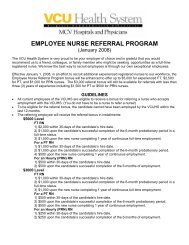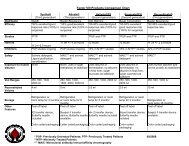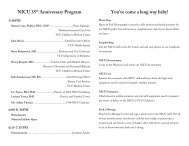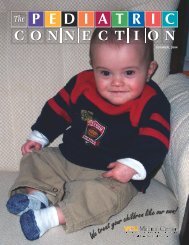How to Order and Interpret Radiology Studies
How to Order and Interpret Radiology Studies
How to Order and Interpret Radiology Studies
You also want an ePaper? Increase the reach of your titles
YUMPU automatically turns print PDFs into web optimized ePapers that Google loves.
Don’t t forget the foot films!<br />
AP, lateral <strong>and</strong> oblique<br />
Contralateral foot films<br />
Weight-bearing views<br />
Lateral view<br />
– Metatarsal shafts &<br />
tarsal bones align<br />
AP <strong>and</strong> obliques<br />
– 2nd met medial<br />
border & middle<br />
cuneiform align<br />
Chronic Ankle Pain<br />
MRI<br />
– Imaging modality of choice for soft-tissue tissue <strong>and</strong><br />
osteochondral lesions<br />
CT<br />
– Ankle fractures & bony pathology<br />
Bone scan<br />
– Diffuse, non-specific pain<br />
– F/U CT if needed for further evaluation of stress<br />
fractures<br />
Conclusions<br />
Initial imaging of choice: plain radiography<br />
– Image before injection<br />
– Image all trauma<br />
CT: good for bone<br />
MRI: good for soft tissue<br />
– T1: ana<strong>to</strong>my; T2: pathology<br />
Scintigraphy: : good for metabolic activity<br />
Ultrasound: great potential<br />
– Opera<strong>to</strong>r / interpreter & technology dependent<br />
Imaging selection<br />
– Based on his<strong>to</strong>ry <strong>and</strong> physical<br />
– Know your specialists’ imaging preferences<br />
– Consult radiologist as needed<br />
349
















